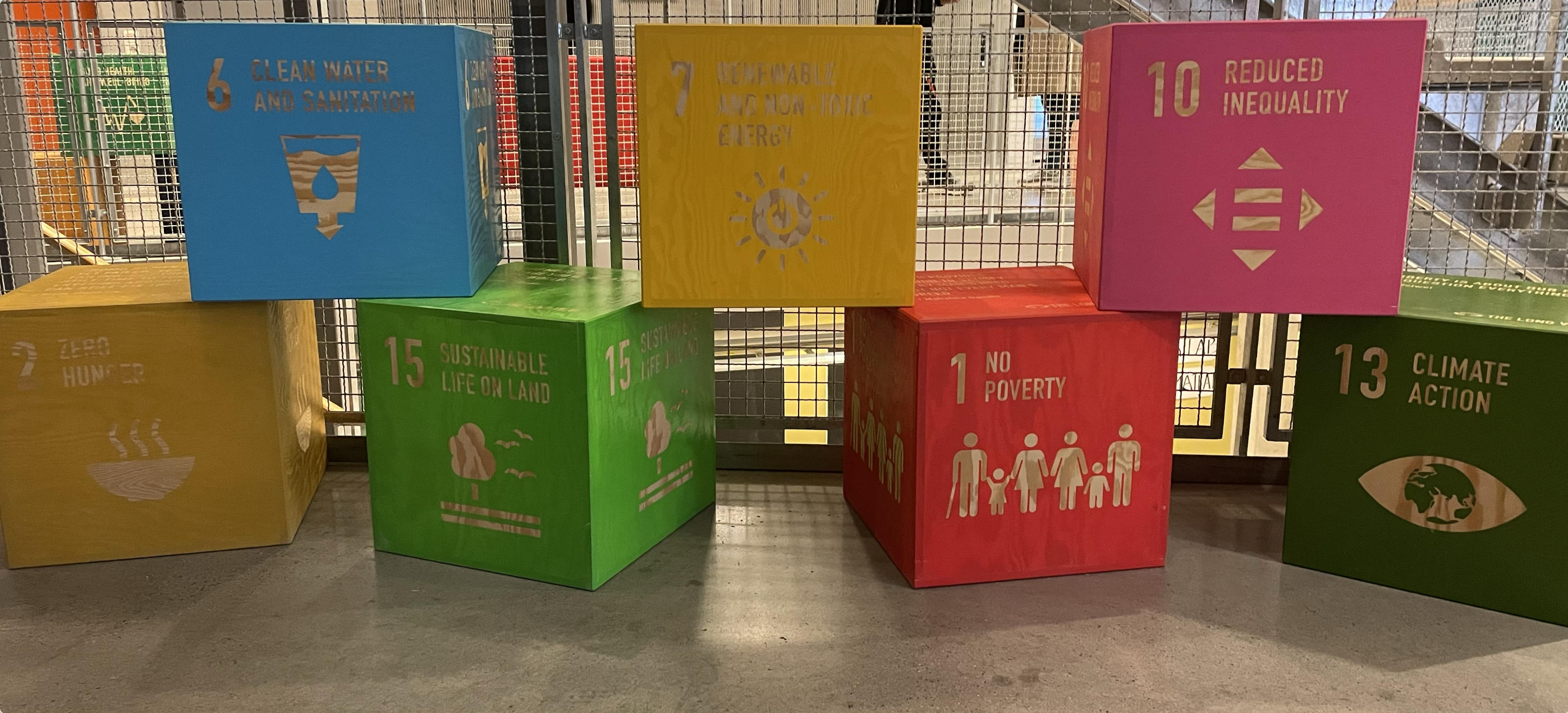
Four misunderstandings about sustainability (after Block & Paredis, 2019)
One thing I find irritating in many conversations around how to teach about sustainability is that they tend to get hung up on what “sustainability” actually means. So I got pretty excited when I found this article by Block & Paredis (2019), arguing for actually not needing a “waterproof and objective definition” of sustainability; on the contrary, I think their way of talking about sustainability is actually much more useful in teaching. My summary below.
Block & Paredis (2019) present “four misunderstandings about sustainability and transitions”, of which I find especially the second super relevant for future conversations I see myself having:
Misunderstanding 1: “Sustainability is about ecological concerns”
In our context, it is easy to feel that sustainability is only about the “green” problems, and thus, despite it having become a buzzword everywhere, to make it feel like it is a narrow niche issue that is getting way too much attention already and does not need to be taken seriously. But sustainability, even in the early definition of the Sustainability Development Goals, is so much bigger than that; it is about creating a liveable planet for us and future generations. This includes dealing with challenges like climate change or overfishing or pollution, but also providing clean drinking water and education to everybody. For many places in the world it is thus about increasing rather than decreasing consumption, in order to create good living conditions everywhere.
Misunderstanding 2: “We need a waterproof and objective definition of sustainability”
Since sustainability is so multi-faceted, it is easy to get lost when trying to find the one definition to rule them all. But the concept of sustainability is used by so many different stakeholders in so many different contexts that this is distracting from the actual issue at hand: What do you mean when you talk about it in your context?
Block & Paredis (2019) present a figure that maps out different views on sustainable development on the axes of ecological and social concern, where no and very little concern falls into the category of “status quo” (we’ll find technological solutions to fix the issue, without having to change much about the way we live), medium concern is about “reform” (our current systems are not perfect, but we can change them sufficiently to address the challenges), and high concern is about “transformation” (we need to change the way we live and the systems that organize society completely, because our problems “are located within the very economic and power structures of society” and in “how humans interrelate with the environment”).
Many of the stakeholders mapped there, like the EU, the UN SDGs, mainstream NGOs, are concerned with both ecological and social reform, but of course not necessarily equally. I find this figure very helpful to visualize the space in which we have to position ourselves, and can also locate other stakeholders; I would hope that this can make discussions a lot more nuanced in the future.
Misunderstanding 3: “Every change leads to a transition”
This misunderstanding is about how a transition is much more far-reaching than what people might mean when they use the word. In their example of how central cars are these days, they discuss that it’s about a whole industry’s existence, the infrastructure that dominates all our spaces (roads, petrol stations and parking spaces instead of, for example, cycling lanes, playgrounds and urban gardening), our own behaviour and values that associate cars with freedom (and status, and all kinds of other things), laws regarding taxes, traffic, urban planning, … All of these are interconnected, so changing one aspect (introducing electric cars, car-free city centers, …) will not result in a transition — the other aspects are likely to bring it back to the stable regime we started out with.
Misunderstanding 4: “We can easily plan and manage sustainability transitions”
Since transitions are so complex and interconnected, it is not at all clear how to manage the whole system so it changes towards more sustainability.
I find this perspective of sustainable development “as an open-ended orientation for change” very helpful (as complicated as it makes things on the other hand). It is not a one-off effort, it needs to be a continuous striving for change in the right direction. In that sense: Let’s keep going! :)
A preprint version of which an updated version was published as: Block, T., Paredis, E. (2019). Four misunderstandings about sustainability and transitions. In: Van Poeck, K., Östman, L. & Öhman, J. (Ed.) Sustainable Development Teaching: Ethical and Political Challenges. London: Routledge, pp.15-27.
Recap of the first meeting of my new course "Teaching for Sustainability" - Adventures in Oceanography and Teaching says:
[…] how it’s a bit of a trap to try to define what “sustainability” actually means (see Block & Paredis (2019)’ second misunderstanding), while also raising that we need to think not just about ecological concerns (see Block & […]
Currently reading Part I of the book "Sustainable Development Teaching - Ethical and Political Challenges", edited by Van Poeck, Östman, Öhman (2019) - Adventures in Oceanography and Teaching says:
[…] The book started out with a pleasant surprise: I had already read, and summarized, the first chapter on […]
From “education for sustainable development” to “education for the end of the world as we know it” (reflecting on Stein et al., 2022) - Adventures in Oceanography and Teaching says:
[…] wrote about the “Four misunderstandings about sustainability” (after Block & Paredis, 2019) recently, and find them really useful to spark discussions. Similarly thought-provoking are the […]